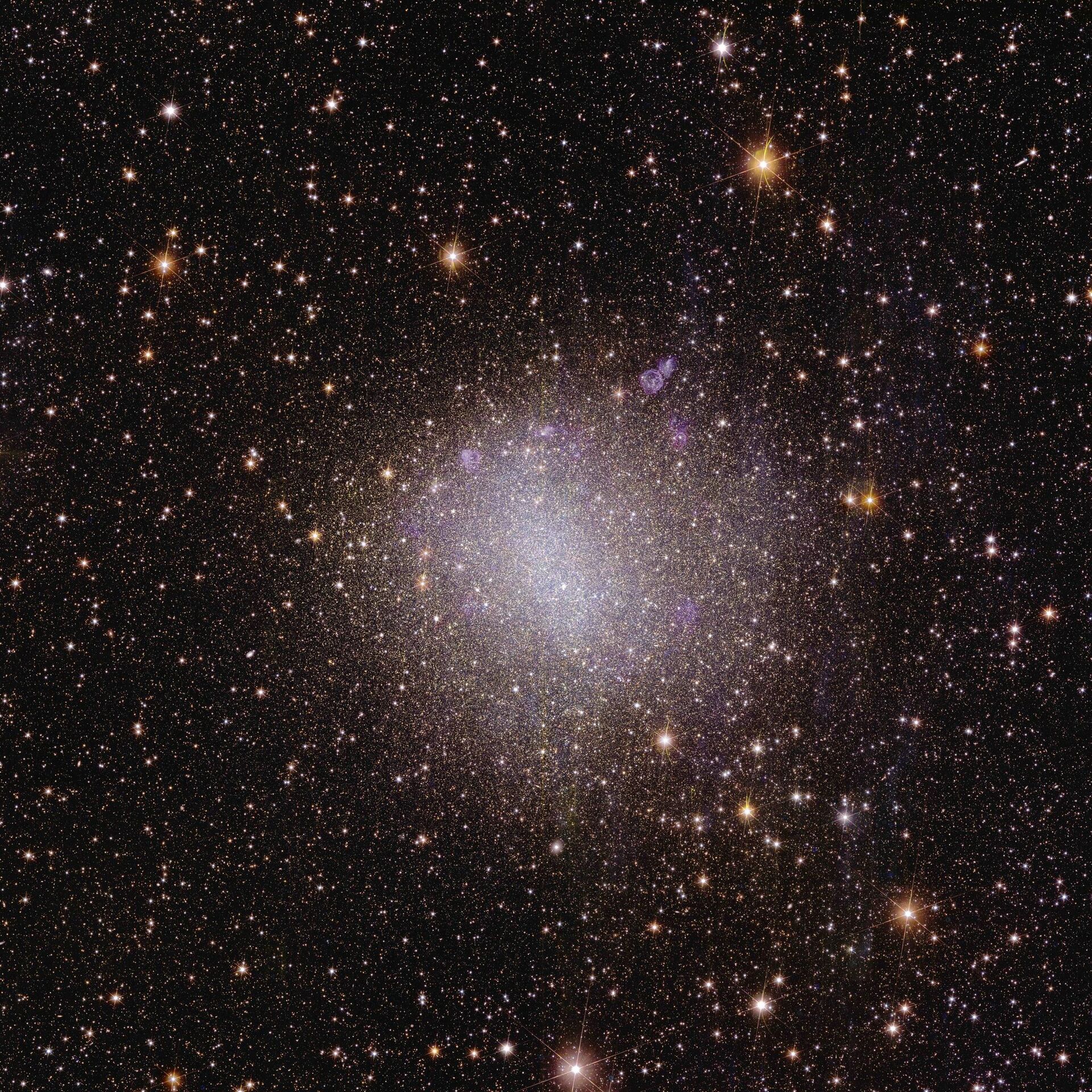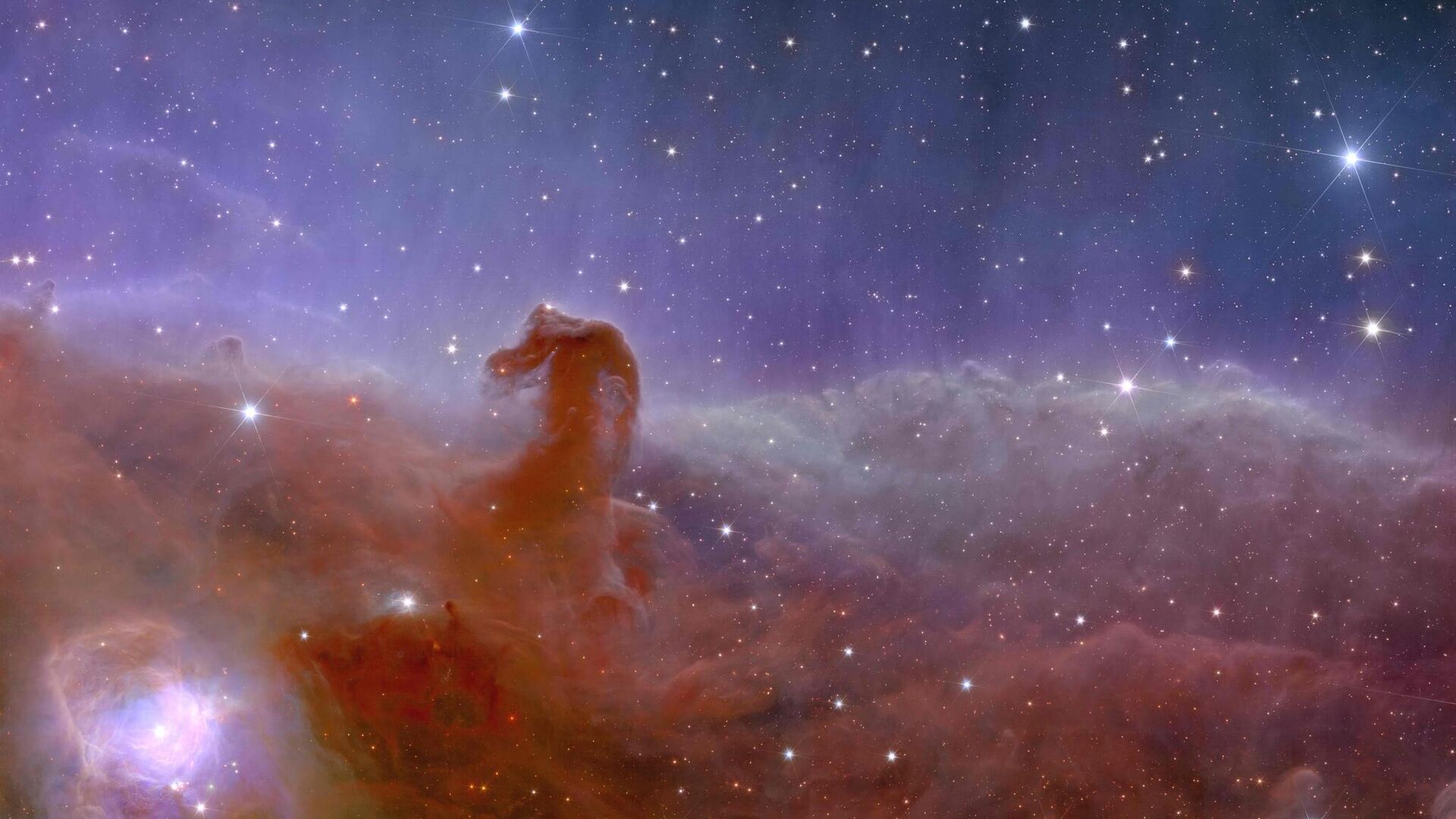Photos: ESA’s Euclid Telescope Sends Back First Images From Hunt for Dark Matter
Subscribe
Physicist Albert Einstein demonstrated how gravity affects light, and astronomers have used that phenomenon to study the subtle effects of gravity on an intergalactic scale, looking at how the mass of whole galaxies can bend light. However, they found a strange situation: their light bends a lot more than it should.
Roughly four months after being launched into a distant Earth orbit, the European Space Agency’s Euclid space telescope has sent back its first photographs of distant galaxies.
The ESA published the photos on Tuesday, which show a cluster of galaxies, close-ups of several galaxies and globular clusters, and a stunning view of the horsehead nebula.
The probe has been given a six-year mission to look for signs of the existence of dark matter, a type of matter theorized to exist due to the unexplained behavior of visible matter, but which has never before been directly observed.

Over its lifetime, our dark Universe detective will image billions of galaxies, revealing the hidden influence that dark matter and dark energy have on them.
That’s why it’s fitting that one of the first galaxies that Euclid observed is nicknamed the ‘Hidden Galaxy’. This galaxy, also known as IC 342 or Caldwell 5, is difficult to observe because it lies behind the busy disc of our Milky Way, and so dust, gas and stars obscure our view.

This incredible snapshot from Euclid is a revolution for astronomy. The image shows 1000 galaxies belonging to the Perseus Cluster, and more than 100 000 additional galaxies further away in the background, each containing up to hundreds of billions of stars.
“Euclid, our dark universe detective, has a difficult task: to investigate how dark matter and dark energy have made our universe look like it does today,” the ESA said in a news release, noting that “95% of our cosmos appears to be made of these mysterious ‘dark’ entities. But we don’t understand what they are because their presence causes only very subtle changes in the appearance and motions of the things we can see.”
By the time its mission is complete, Euclid will have created the largest cosmic 3D map ever made, covering billions of galaxies out to 10 billion light-years away, the ESA said. It will do so using a network of what are effectively 36 high-powered digital cameras able to record the entire visible light spectrum up to near-infrared light and compose it into a single massive image.

To create a 3D map of the Universe, Euclid will observe the light from galaxies out to 10 billion light-years. Most galaxies in the early Universe don’t look like the quintessential neat spiral, but are irregular and small. They are the building blocks for bigger galaxies like our own, and we can still find some of these galaxies relatively close to us. This first irregular dwarf galaxy that Euclid observed is called NGC 6822 and is located close by, just 1.6 million light-years from Earth.

This sparkly image shows Euclid’s view on a globular cluster called NGC 6397. Globular clusters are collections of hundreds of thousands of stars held together by gravity.
Located about 7800 light-years from Earth, NGC 6397 is the second-closest globular cluster to us. Together with other globular clusters it orbits in the disc of the Milky Way, where the majority of stars are located.
“The images released today showcase this special capacity: from bright stars to faint galaxies, the observations show the entirety of these celestial objects, while remaining extremely sharp, even when zooming in on distant galaxies,” the ESA said.
Nicola Fox, the associate administrator at NASA’s Science Mission Directorate in Washington, DC, hailed the Euclid probe as an observatory that will “uncover a treasure trove of scientific discoveries that will be used across the world, including by US scientists, for years to come.”

Euclid shows us a spectacularly panoramic and detailed view of the Horsehead Nebula, also known as Barnard 33 and part of the constellation Orion.
At approximately 1375 light-years away, the Horsehead – visible as a dark cloud shaped like a horse’s head – is the closest giant star-forming region to Earth. It sits just to the south of star Alnitak, the easternmost of Orion’s famous three-star belt, and is part of the vast Orion molecular cloud.
The US space agency provided the ESA, its companion organization in the European Union, with vital hardware for its instruments and has a separate science data center that will study Euclid’s findings alongside similar centers around the world.
NASA plans to launch a similar probe, the Nancy Grace Roman Space Telescope (NGRST), by 2027 to study another mysterious force dubbed “dark energy.” Like dark matter, dark energy has never been directly observed, but is hypothesized to exist due to unexplained movements by interstellar objects, such as the continued expansion of the universe.
Fox said the NGRST would “build upon what Euclid learns and will additionally survey objects on the outskirts of our solar system, discover thousands of new planets, explore nearby galaxies, and more."



